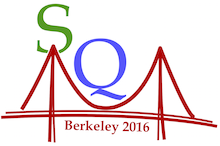Speaker
Xuan Li
(LANL)
Description
Heavy flavor and quarkonium production are important hard probes to test Quantum Chromodynamics (QCD) and measure the properties of the Quark Gluon Plasma (QGP) created in high energy heavy ion collisions. After the installation of the Forward Silicon Vertex Tracker (FVTX) in 2012, the PHENIX experiment collected large data sets of $p$+$p$, $p$+Al, $p$+Au, Cu+Au and Au+Au collisions. The FVTX dramatically improves the tracking quality in the rapidity range of $1.2<|y|<2.2$, with full azimuthal angle coverage. When combined with the barrel silicon vertex detector, decayed particles with a non-zero displaced vertex can be identified. This tracking upgrade provides opportunities to study cold nuclear matter effects especially in asymmetric nuclear interactions and heavy quark energy loss in cold nuclear medium and hot QGP. These studies will help separate the cold nuclear effects from the hot QCD effects (eg. QGP) in heavy ion collisions. In this talk, we will review the status of several heavy flavor analyses that utilize the FVTX in several different collision systems. The analysis topics include the $J/\psi$ to $\psi'$ ratio study from 200 GeV $p$+$p$, $p$+Al and $p$+Au data and the extraction of non-prompt $J/\psi$ from B meson decay relative to the prompt $J/\psi$ production in Cu+Au collisions at $\sqrt{s_{NN}} = 200$ GeV and $p$+$p$ collisions at $\sqrt{s_{NN}} = 510$ GeV. The method to study the distance of closest approach on the x-y plane at the z vertex in the B to J/$\psi$ ratio analysis can be applied in other data sets and to the study of B- and D-meson semi-leptonic decays to muons. We will show the prospects for these forward and backward rapidity measurements in (asymmetric) heavy ion and $p$+$p$ collisions.
| On behalf of collaboration: | PHENIX |
|---|
Author
Xuan Li
(LANL)
